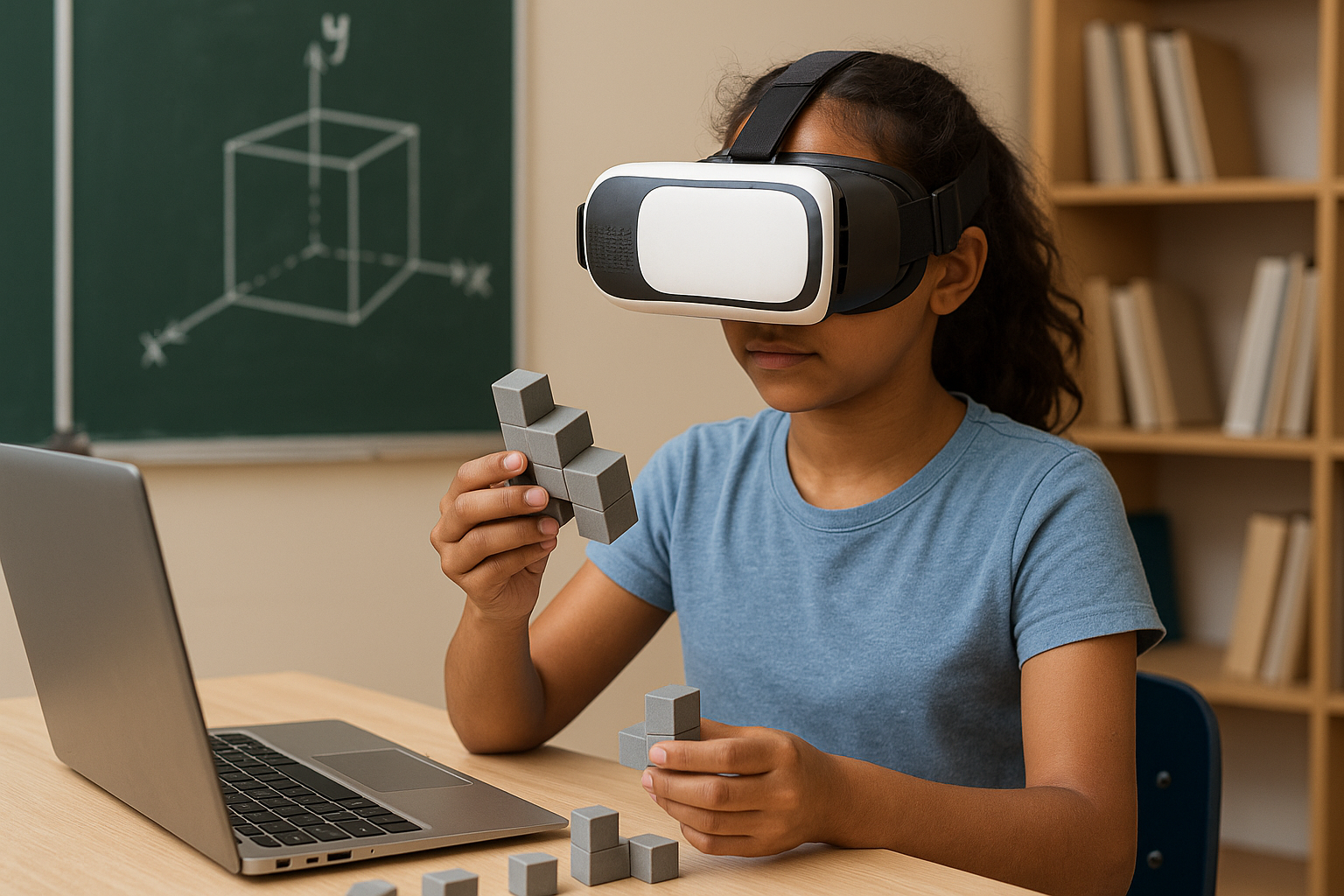Digital interventions offer new hope in ending gender bias in STEM education
Spatial reasoning, which includes capabilities such as mental rotation, spatial visualization, and perspective-taking, is a foundational skill in most STEM disciplines. According to the study, girls in Western education systems often receive limited encouragement and fewer opportunities to develop these abilities. Unlike reading comprehension, where girls tend to outperform boys, spatial abilities are frequently underemphasized in school curricula, contributing to uneven cognitive development between genders.

A new study published in Virtual Worlds sheds light on the deep-rooted gender disparities that persist in STEM fields and proposes a pathway for transformation through technology. The author explores the influence of spatial skill development, gender identity formation, and digital interventions in altering the trajectory of girls in STEM careers.
The article, titled “Fighting STEM Stereotypes in Adolescence: The Role of Spatial Skills, Identity, and Digital Interventions”, presents a compelling argument that new technologies such as virtual reality (VR) and artificial intelligence (AI) may provide the missing link in tackling the underrepresentation of women in technical disciplines by addressing the early development of cognitive and social barriers.
Why do gender gaps persist in STEM fields?
The gender gap in science, technology, engineering, and mathematics remains a major concern in many Western countries. Despite educational efforts and policy reforms, the proportion of women in disciplines such as physics, engineering, and computer science continues to lag far behind that of men. Chamizo's study identifies a key factor often overlooked in mainstream educational strategies: spatial skills.
Spatial reasoning, which includes capabilities such as mental rotation, spatial visualization, and perspective-taking, is a foundational skill in most STEM disciplines. According to the study, girls in Western education systems often receive limited encouragement and fewer opportunities to develop these abilities. Unlike reading comprehension, where girls tend to outperform boys, spatial abilities are frequently underemphasized in school curricula, contributing to uneven cognitive development between genders.
As these skill gaps become internalized, stereotypes are reinforced. Girls often grow up believing that STEM subjects are not for them, which leads to disengagement and self-exclusion from academic pathways that lead to careers in technology and engineering. The research situates these dynamics within a broader social context, arguing that cultural conditioning, lack of female role models, and education system biases collectively contribute to maintaining the gender imbalance.
How can spatial skills be improved in girls?
The study puts forward a core hypothesis: if spatial skills are critical to STEM success and are unequally developed, then targeted interventions aimed at improving these skills in girls during adolescence could help narrow the gender gap. The study identifies adolescence as a crucial developmental window when self-concept, identity, and academic preferences become solidified.
To address these cognitive disparities, the research highlights the potential of immersive digital technologies. Virtual reality, in particular, can simulate complex three-dimensional environments where users must interact spatially to navigate or solve problems. These environments can be customized to gradually build spatial reasoning in users who lack confidence or exposure to such skills.
AI-based adaptive learning platforms are also presented as effective tools in this context. These systems can identify individual strengths and weaknesses, personalize content delivery, and offer feedback in real time, creating a tailored educational experience that reinforces spatial understanding without stigma or comparison. The author argues that such digital interventions can give girls a new entry point into STEM, one rooted in positive engagement and self-efficacy.
Drawing from existing applications in social education, the author notes that VR has already proven successful in breaking down other types of bias, such as racial or cultural stereotypes. By placing users in unfamiliar perspectives, VR can foster empathy and cognitive flexibility - traits that are transferable to identity formation and academic interest. The study raises the possibility that similar methods could be used to dismantle harmful beliefs about gender and aptitude in STEM.
What role should schools and policy play in driving change?
While digital tools hold promise, the author points out that meaningful change requires a systemic approach and calls for a reconfiguration of formal educational curricula to better balance the focus between linguistic skills and spatial reasoning. Current structures, she argues, tend to reward verbal proficiency over spatial intelligence, further entrenching gendered academic patterns.
Institutional support is essential to scale effective digital interventions. The study recommends integrating VR and AI-based learning platforms not as optional add-ons, but as embedded components of science and math instruction. This approach ensures that all students, regardless of background or existing interest in STEM, receive consistent exposure to spatial training. Early intervention, particularly in late primary and early secondary school, is identified as a critical period for long-term impact.
Moreover, the study points to the importance of involving teachers, parents, and education stakeholders in dismantling stereotypes. Training programs can help educators recognize implicit biases in classroom practice, while community outreach can challenge social narratives that discourage girls from pursuing technical fields. The use of digital tools should not replace human instruction, the author argues, but rather enhance it by offering new modes of engagement and inclusion.
If the goal is to increase female participation in high-demand, high-impact STEM careers, then interventions must be informed by developmental psychology, cultural critique, and evidence-based technology use, the study concludes.
- FIRST PUBLISHED IN:
- Devdiscourse










